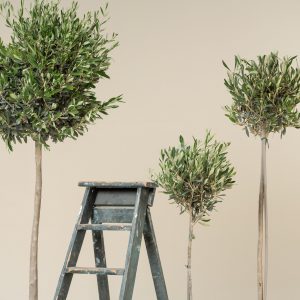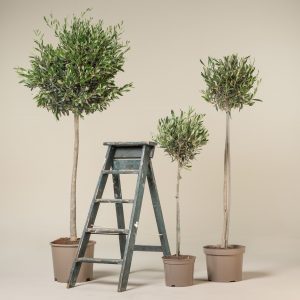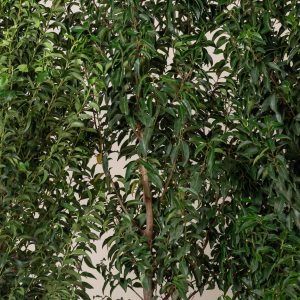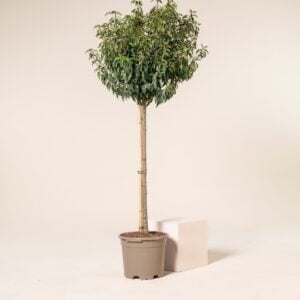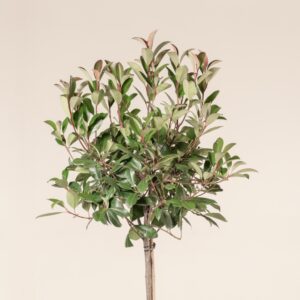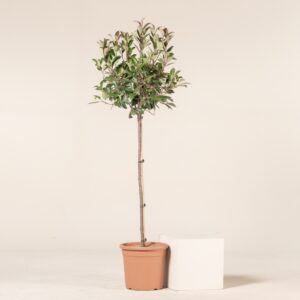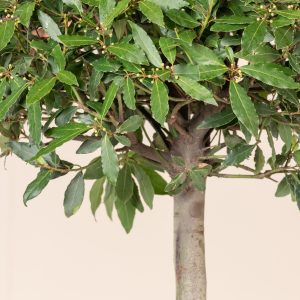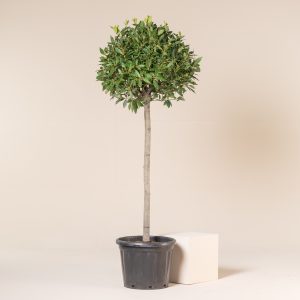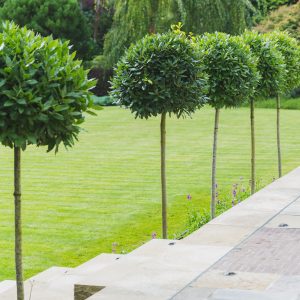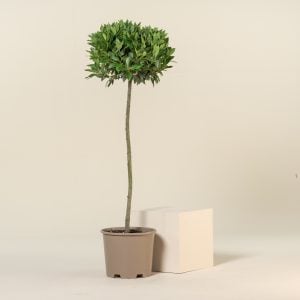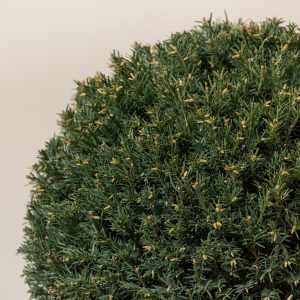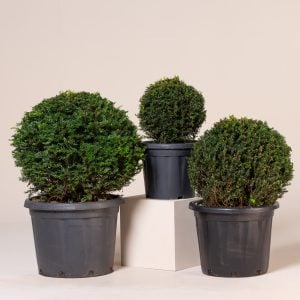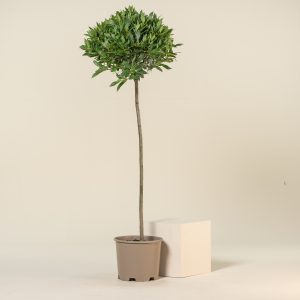A handy guide for choosing the right tree and shrubs for your garden, with an explanation of standard, half-standard, espalier, multi-stem, and other forms.
When selecting trees or shrubs for your garden, there are several factors you have to consider such as climate suitability, soil type, and available space. You may also want to evaluate the soil pH and drainage to match the plant’s preferences. Additionally, factor in the mature size of the tree or shrub, allowing ample space for growth without overcrowding.
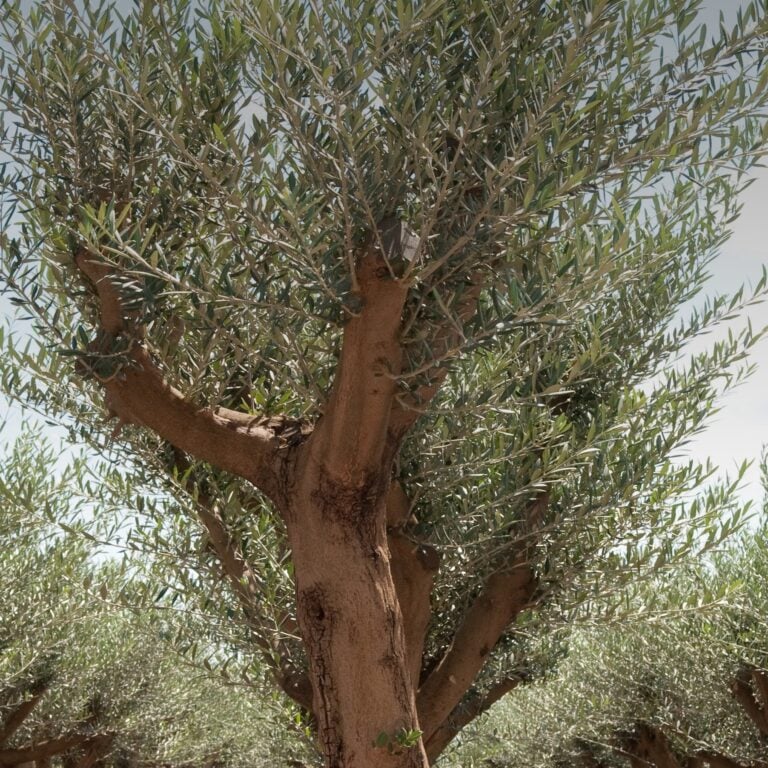
Get to grips with the basics
Once you have a good grasp on the basic environmental factor, it’s time to take into account the distinction between evergreen and deciduous varieties. Evergreen plants retain their leaves throughout the year, providing year-round greenery and acting as a constant backdrop to seasonal changes. Deciduous species, on the other hand, shed their leaves in the autumn, often displaying vibrant autumn colours before entering a period of dormancy.
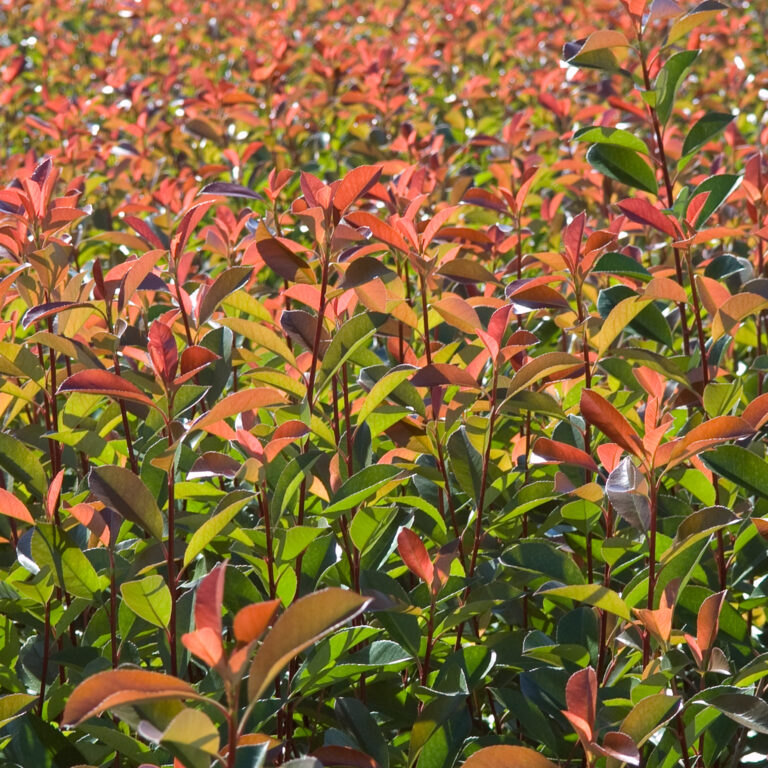
Do you want colour?
Additionally, consider the inclusion of flowering trees and shrubs to enhance the aesthetic appeal of your garden. Thoughtfully chosen blooms can introduce bursts of colour, fragrance, and attract pollinators, contributing to a dynamic and visually captivating outdoor space.
Some plants also provide colour without flowers. Photinia, commonly known as Red Robin is an excellent example of this as its new growth is a vibrant shade of red which contrasts brilliantly with the green of the older foliage.
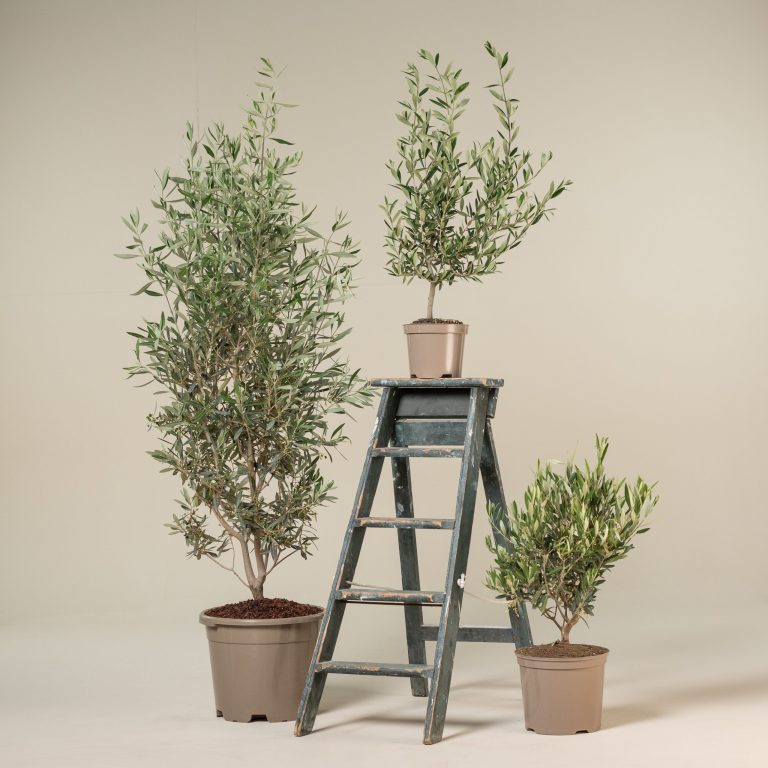
Think about size and shape
There’s a lot to think about above, but that’s just the beginning! Once you have an idea of the kind of trees and shrubs you like, you’re now faced with the decision on what size and shape to get. Young plants are of course cheaper, but a more mature specimen can give you instant impact, structure and privacy.
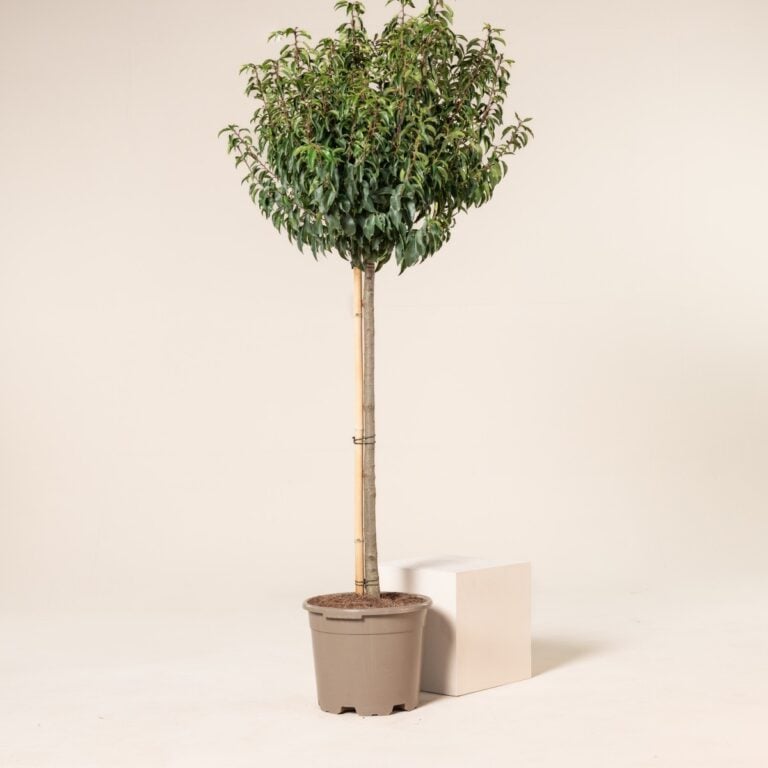
What are 'Standards'?
‘Standards’ is a term used in horticulture for trees and shrubs that are grown in a particular way from a young age. Generally, they are trained to have a very straight, single stem which is kept bare up to a certain height. The crown is then pruned to achieve a balanced, desired shape.
Many of the species selected for this form of horticulture would grow as multi-stemmed shrubs if left to their own devices, only forming a bare trunk (or trunks) after many years. Growing them as Standards not only gives them a more mature form at a younger age, but has the advantage of providing some useful structure for gardeners.
Related products
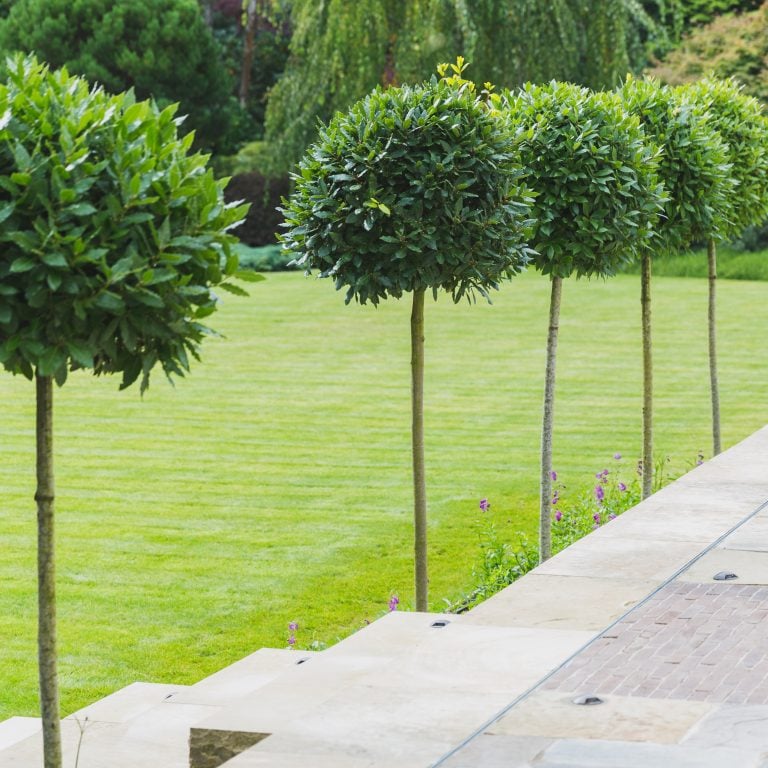
Lollipops
The classic form using this method is the lollipop shape, where a bare stem is topped with a tightly-clipped crown to appear like a ball. These can be any size from Quarter-Standard through to Full-Standard (see below).
Species commonly grown as lollipops are Olives (Olea) and Bay (Laurus). Once considered something only for formal gardens, many gardeners are now incorporating them into all sorts of landscape design styles.
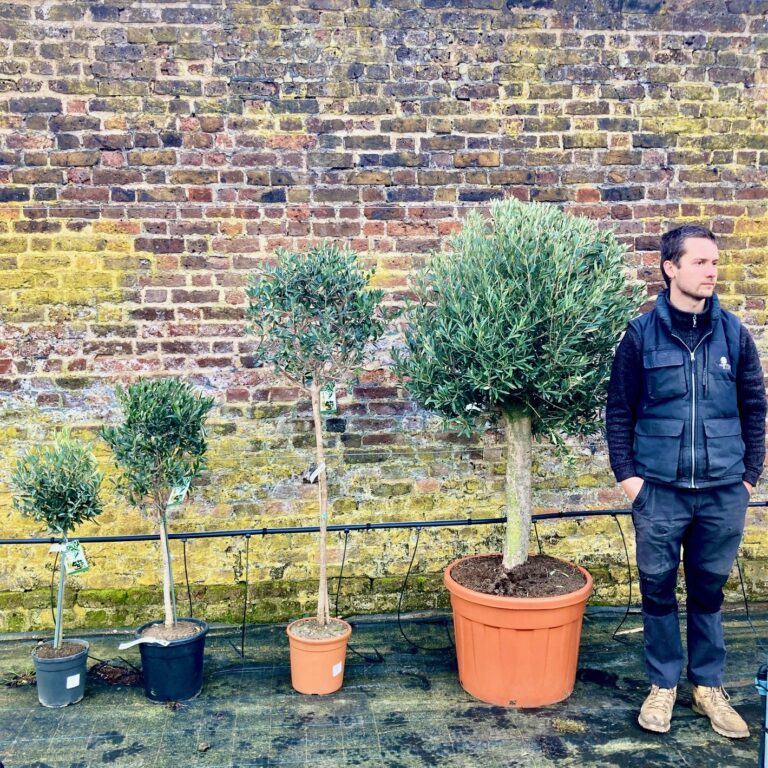
Quarter- and Half-Standards
Quarter Standards
Typically have 1 metre or less of bare stem
Are mostly used in containers or raised planters, e.g. either side of a front door
Half Standards
Have 1.2-.1.5 metres of bare stem
Also used in containers, but sometimes seen in the ground in small spaces, e.g. courtyard gardens
This image shows a selection of Quarter and Half Standard Olives and illustrates the variation within each category. All standard plants should specify the girth of the trunk and the pot size.
Related products
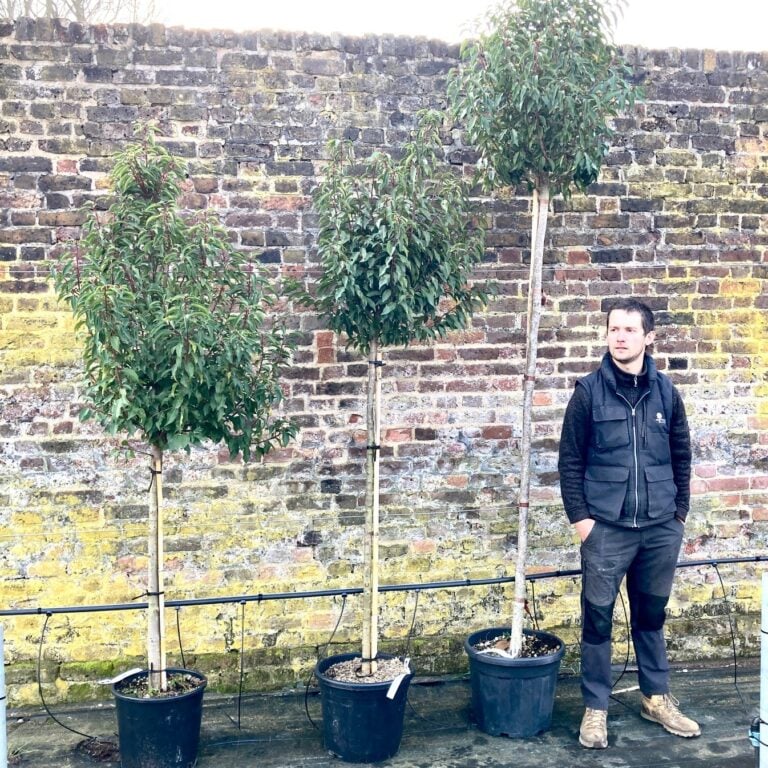
Three-quarter-, and Full-Standards
Three-quarter Standards
Typically have a bare stem of 1.5-1.7 metres
Should always state trunk girth and pot size
Full Standards
Have a bare stem of approximately 1.8 metres
Crown can be natural, clipped or pleached/espalier (see below)
This image shows Portuguese Laurel (Prunus lusitanica) in a Half-, Three-quarter-, and Full Standard.
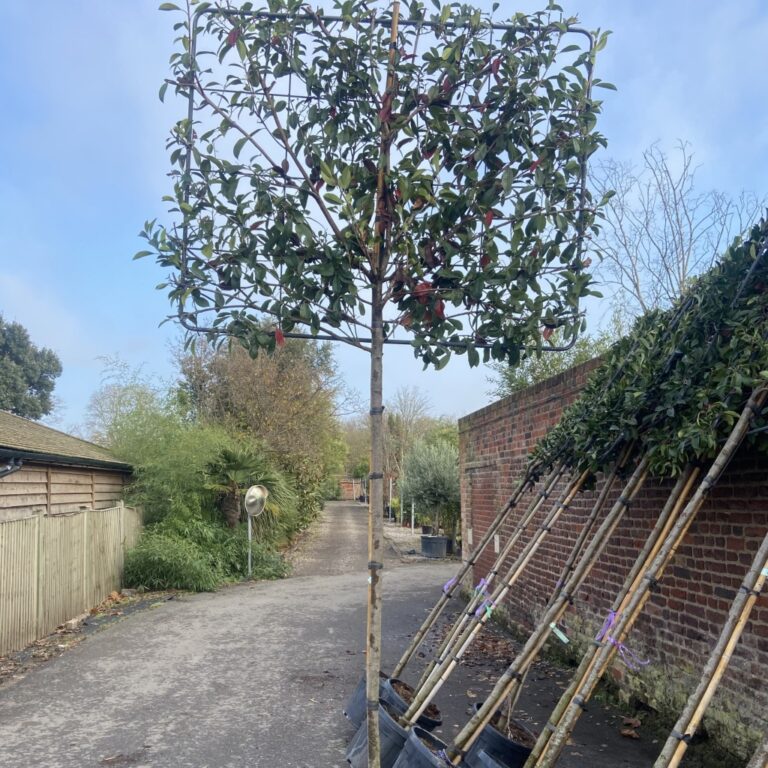
Espalier/Pleached
Another form that is popular among gardeners and landscapers are Espaliered or Pleached trees and shrubs. These have been grown on a screen and are perfect for providing a living screen.
Full Standards with a pleached canopy are an ideal solution for providing instant privacy. The 1.8 metre bare stem is approximately the same height as many garden fences so can be planted along the boundary of your garden. Choose an evergreen species if you want year-round privacy.
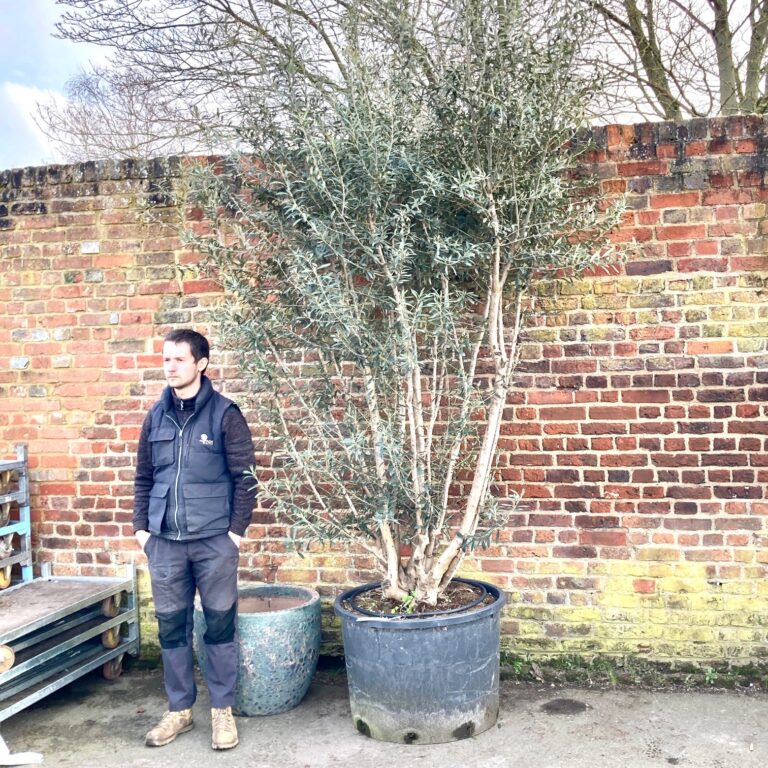
Multistems
Another growing method popular with gardeners and landscapers is to selectively prune and train a plant to have multiple stems. This creates a more natural look but can add instant height and impact.
Related products
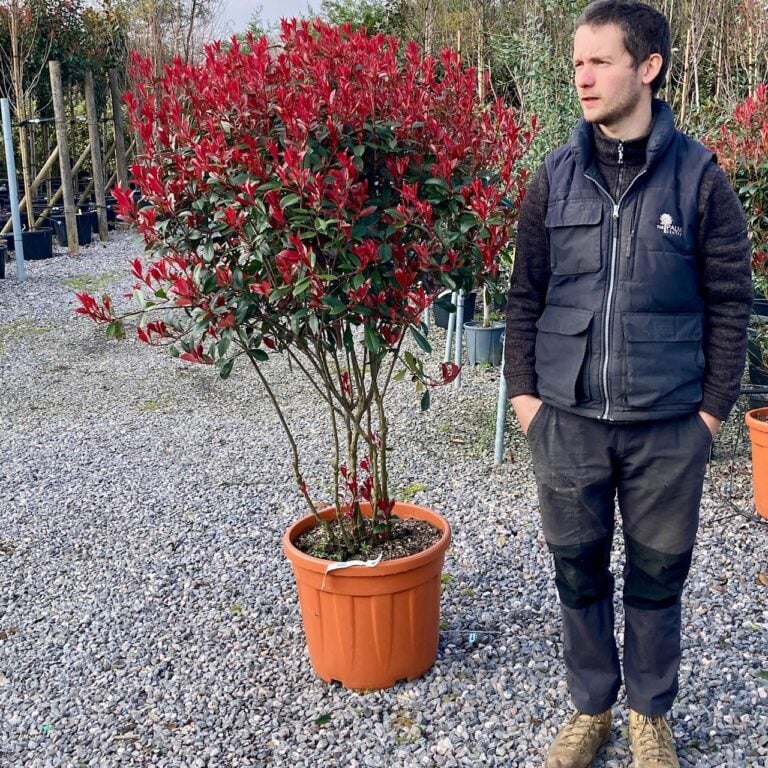
Multistem Standards
A combination of standard forms and multistems, these specimens are excellent for providing a focal point in smaller spaces. The architectural form of the multiple stems is shown to best advantage when they are kept bare.
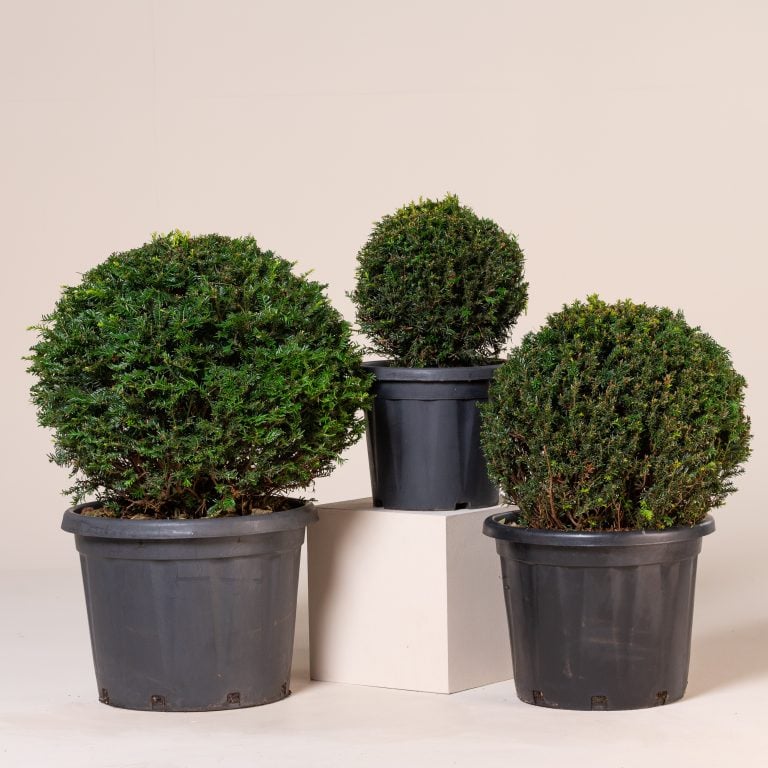
Other shapes
Clipped standards can work well with other topiary such as clipped balls and pyramids, typically Taxus, Ilex and other evergreen plants.
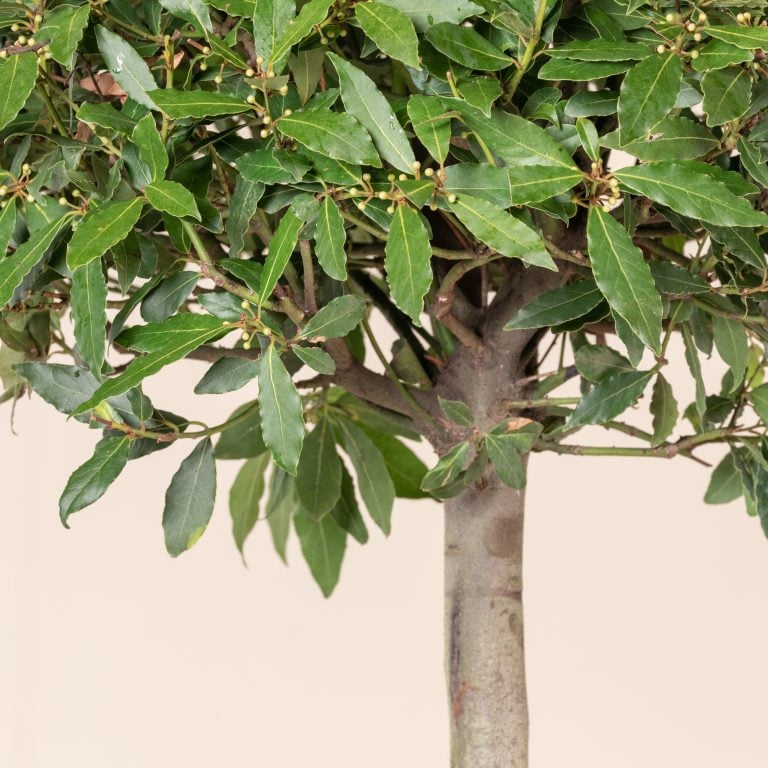
Will the trunk get taller?
This is a question we get asked a lot in the nursery. Generally speaking, the trunk of a Standard plant will not grow/extend upwards any more than the current height, but the crown will. To keep the bare stem may require some maintenance (see below) but if you require a full 1.8 metres of trunk then purchase a Full Standard rather than a Half or Three-quarter. Pruning and training plants into Standards requires a lot of training and expertise.
Like all plants, the stem will get thicker over time, but should always keep its straight form.
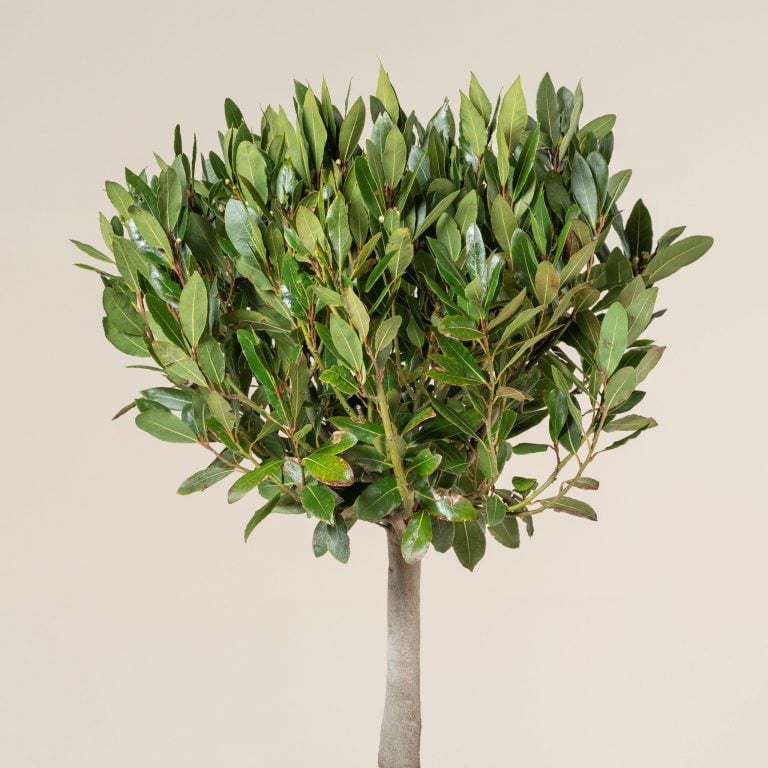
Maintenance
An important consideration when thinking about any of the plants mentioned above is that they may require regular pruning to keep them looking their best. Some species will grow new shoots on bare stems. These will need regular pinching out to maintain the architectural aesthetic of the plant.
Likewise, a tightly-clipped Quarter-Standard or Pyramid will require a steady hand, a good eye, and regular attention to keep it in prime condition.
Related reading
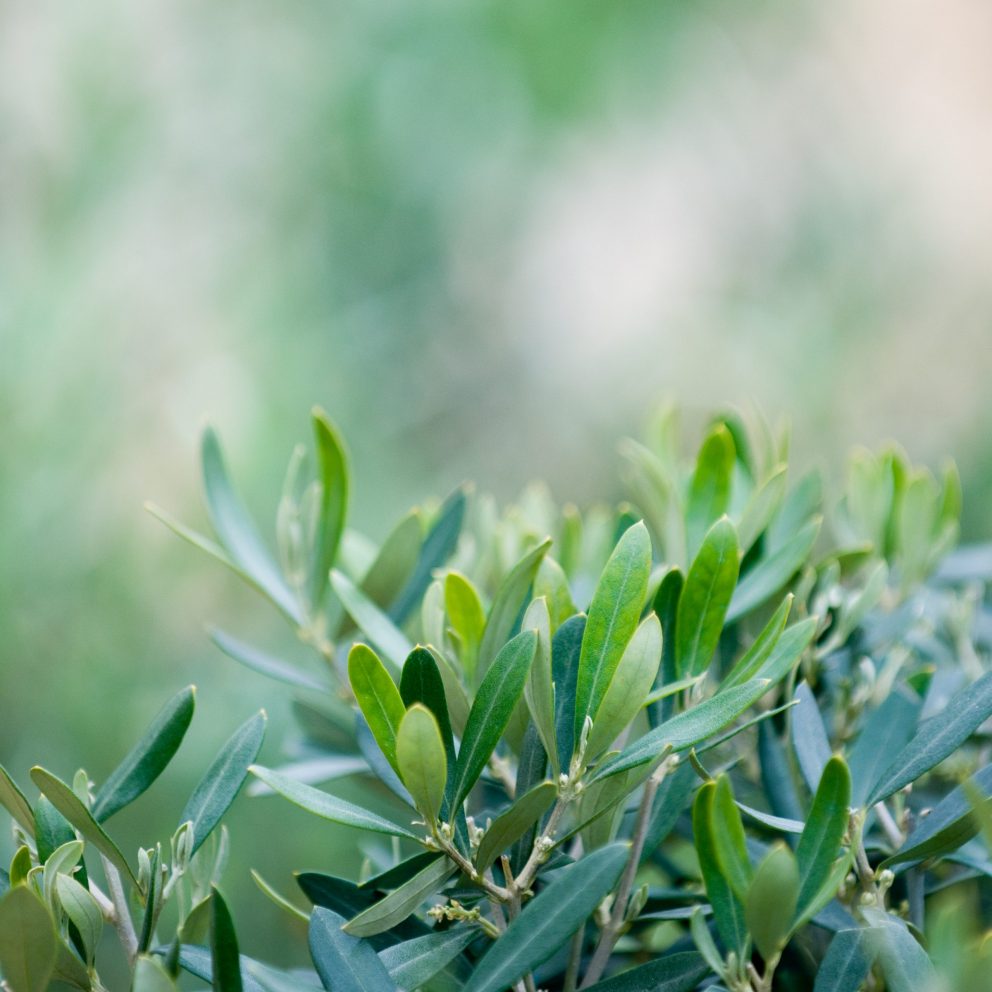
Essential FAQ Olive trees: the questions you want answered right now
Unlock the secrets of thriving olive trees with our comprehensive FAQ list—your go-to guide for cultivating and caring for these timeless treasures.
Read article
Olive Trees 101: Loving your olive tree
Among the oldest cultivated trees in the world, the olive tree is a great addition to any garden. Growing well both in pots and in the ground, even in poor or stony soil.
Olive trees are evergreen and will add a Mediterranean feel to your garden, patio or balcony.
Read article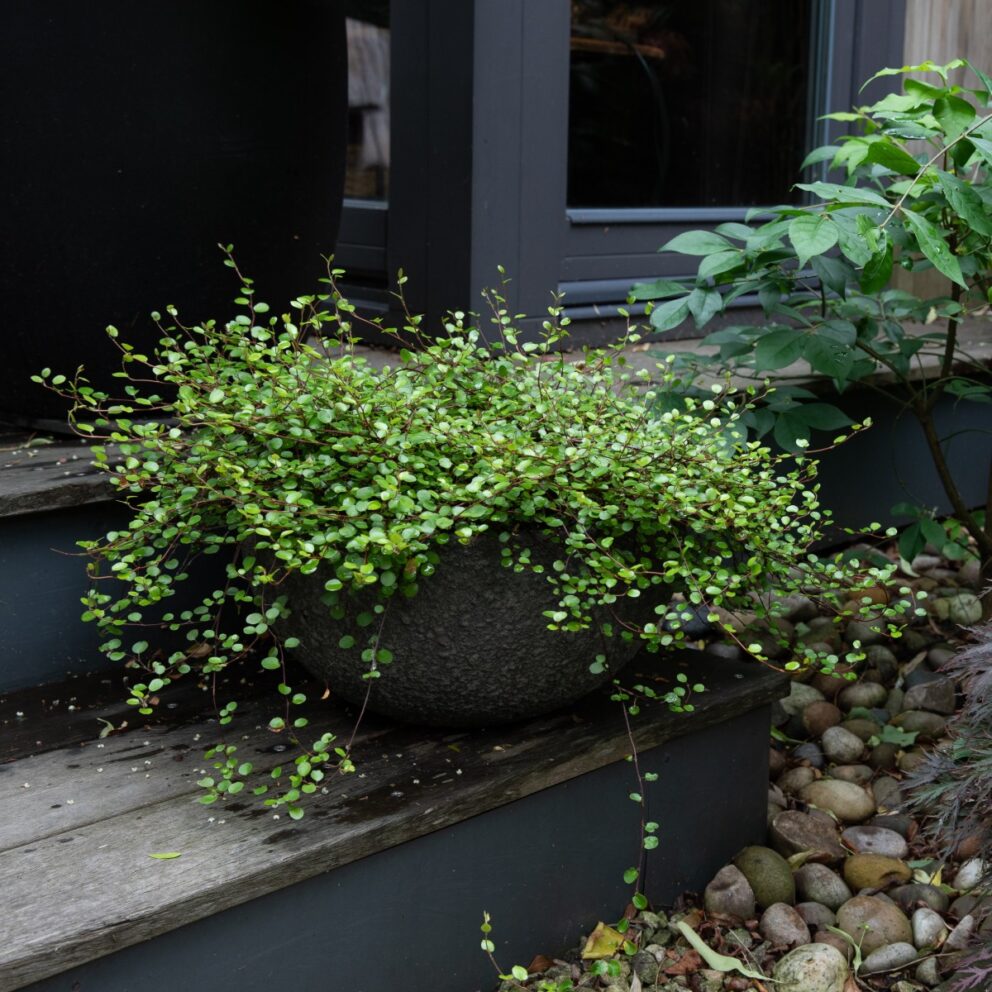
Top 10 Garden Plants of 2023
Looking for inspiration for your garden as the growing season gets underway? With spring just around the corner a lot of people are wondering which plants are trending, and how they can incorporate them into their garden.
Read article
